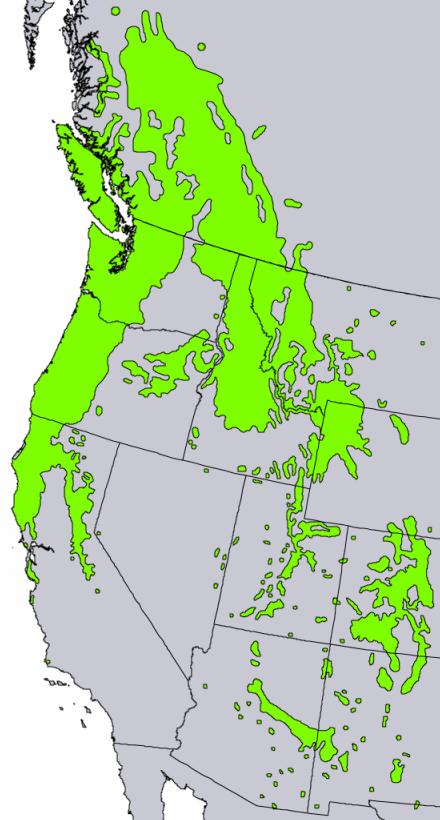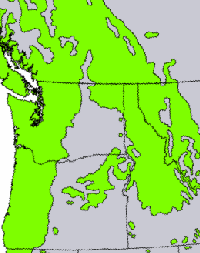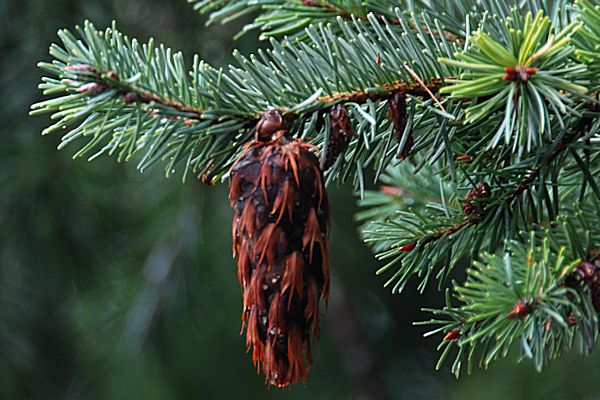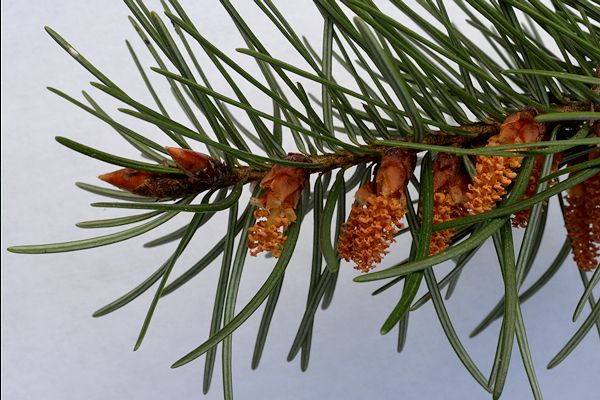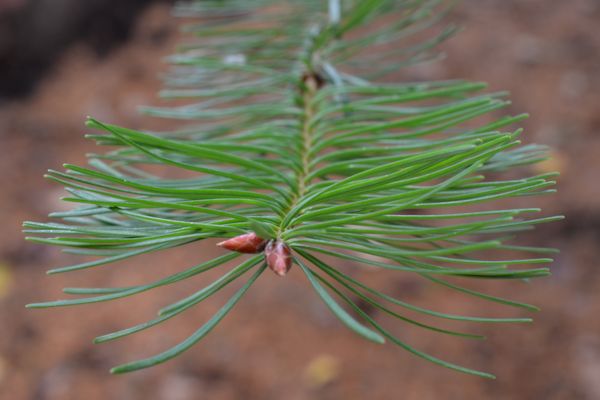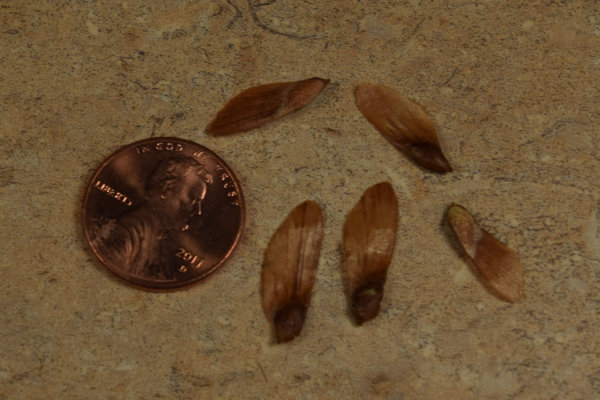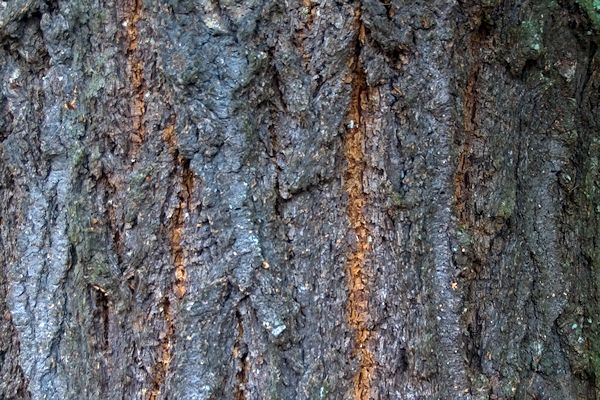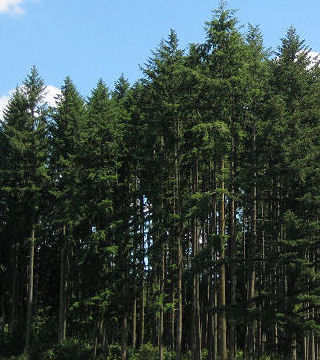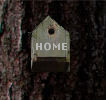 |
Northwest Conifers |
AboutAll ConifersConifersLow-elevationHigh-elevationOthersEast SideSouthwestNon-natives——————Conifer ConesIndexMore Info |
Douglas Fir
– Pseudotsuga
menziesii
|
|
|
Douglas fir grows tall and straight. In fact, it is the tallest conifer in the Northwest, growing to over 300 feet (90 meters). Only redwoods in California grow to a greater height. Douglas fir is also the most common and widely distributed species in the Pacific Northwest. Any conifer you see west of the Cascade summit in Oregon or Washington is more likely to be a Douglas fir than any other species. Needles: Douglas fir is easy to identify. The thin needles stick out in all directions from the twig like a bottle brush. Although the appearance is similar to that of spruce, the needle tips are soft, unlike the sharp spruce needles. If you find a tree growing in the understory, you may see needles that lie flat like a grand fir. Don't let them fool you. Look at the buds. Douglas fir has unique buds that are pointed, reddish-brown and papery. Cones: The cones are the only ones you will find in the Northwest with three-pointed bracts sticking out of the scales. Unlike the true firs, the cones hang down rather than standing up on the branch. Also unlike the true firs, the Douglas fir drops its cones to the ground intact. When you see these unique cones on the ground, you know that a Douglas fir is nearby. The tiny pollen cones come out in the spring. After dispersing the pollen, they fall, often covering the ground under the trees. Bark: Young bark is gray and smooth with resin blisters like the true firs. On large trees, you can usually identify a Douglas fir by the bark alone. The thick bark is deeply furrowed, more than any other tree in the region. The color is gray to brown and usually brown at the bottom of the furrows. Where it grows: Douglas fir is the state tree of Oregon and by far the most common conifer in the state. It grows throughout western Oregon and Washington as well as large areas east of the Cascades. It thrives in direct sunlight but is shade intolerant. It naturally propagates from seeds on bare ground in areas destroyed by fire. It is often planted after logging, resulting in extensive stands of pure Douglas fir. When trying to identify a conifer in western Oregon or Washington, if you guess that it’s a Douglas fir, you will be right 80% of the time. Two subspecies of Douglas fir grow in the Northwest:*
Tallest: The tallest living Douglas fir is 327 feet (99.7 meters), located in Coos County, Oregon. The tallest redwood is 379 feet (115 meters), quite a bit taller than any living Douglas fir. However, reports from logging in the early 1900's claim that some of these Douglas firs were over 400 feet (120 meters) tall. Uses: Douglas fir is the Northwest's most important timber tree. Its strength makes it ideally suited for structural timbers and framing lumber in home construction. Douglas fir is a popular Christmas tree, mostly because it is typically less expensive than other species. Names: David Douglas, the Scottish botanist, is honored in the common name for Douglas fir. Another Scott, Archibald Menzies, takes the honors for the scientific name, menziesii. The genus name, Pseudotsuga, means "false hemlock." Botanists often write the common name as "Douglas-fir" to indicate that it is not a true fir. Other common names: Oregon pine, red fir, and red spruce. Why isn't Douglas fir a true fir? As the scientific name indicates, Douglas fir is not classified as a fir (Abies). It has been called a pine, hemlock and spruce. It is more closely related to the larch than any of these. Its scientific name changed 21 times as botanists attempted to determine the correct classification for the species. Although it has blisters in its bark like the true firs, in many other respects it is quite unlike the firs. The cones look more like hemlock or spruce cones than fir cones. But other differences clearly distinguish it from the hemlocks and spruces. In 1867, it was classified not as a fir, hemlock or spruce, but in a separate genus of its own, Pseudotsuga. Finally, after many more years of discussion and confusion, Pseudotsuga menziesii was adopted as the species name in 1953. ____________ *The Gymnosperm Database lists these as subspecies. OregonFlora lists them as varities. |
Buds and pollen cones
Needles growing in shade
Seeds
Douglas fir woods west of Hillsboro |
© 2011 Ken Denniston - Updated 2023


